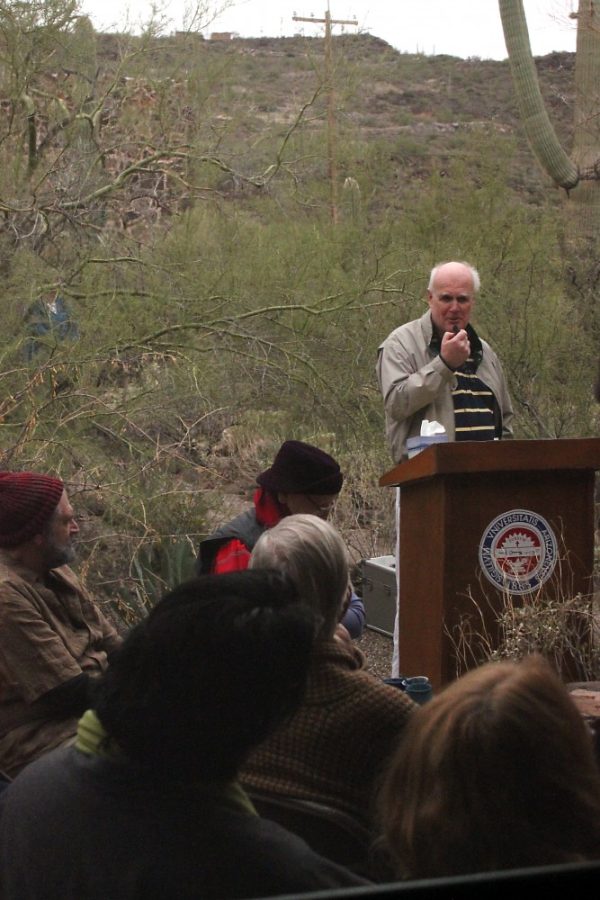One of the things Paul S. Martin, a UA geoscientist who died in September 2010, enjoyed doing with students was early-morning hikes in the Sonoran Desert to study plants and wildlife in the area.
Starting at 6 a.m. on Saturday, Martin’s family, friends, employees, and former students either walked or were shuttled up Tumamoc Hill to the UA’s Desert Laboratory for a casual, camp-style breakfast and memorial service.
“One of the things we thought Paul would like was no formality,” said Mary Kay O’Rourke, Martin’s wife and a UA associate professor of public health. “So the only instructions today were to wear field clothes.”
Martin, who died at 82, came to the UA as an associate researcher in 1957 and retired as an emeritus professor of geosciences in 1989. He is best known to the science community as the person who developed the theory that overkill of large mammals, like mammoths, during the ice age led to their extinction in North America.
When Martin was not in the field or traveling to camp in Mexico, most people could find him in his office at the Desert Laboratory talking to students about his discoveries and hypotheses.
“This was a powerhouse of activity,” said James King, a UA alumnus. King talked about his experiences as a graduate student in the late 1960s and early 1970s, spending time at the Desert Laboratory with friends and Martin, who often made students sit in a circle on the library floor during discussions.
“The ideas he made here still reverberate around the country,” King said.
Among the people who reached the top of the mountain first was Martin’s oldest son, Andy Martin, and Paul Martin’s two granddaughters, both UA students. Molly Martin, an education sophomore, and Jane Martin, an undeclared freshman, both said they have fond memories of vacationing with their grandfather.
“I remember the fun and good adventures,” Molly Martin said. Throughout the entire ceremony, a slideshow of photos and music played in the library of the Desert Laboratory, showcasing Martin’s life. His possessions, like his field hat, walking sticks and favorite stuffed teddy bear as a child, were also on display.
At the beginning of the ceremony, O’Rourke passed around a microphone to people who knew Martin so they could talk about time spent with him. The group sang a song about one of Martin’s hypotheses, called “Bring Back the Elephants,” a tune that encouraged bringing back some extinct animals from the overkill to North America.
“Outside of his wonderful academic endeavors,” said his sister-in-law, Terri O’Rourke, “he was the kindest and wonderfulest man I have ever met.”









